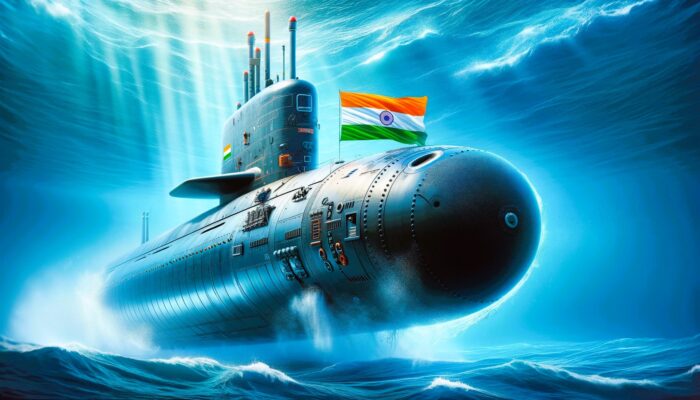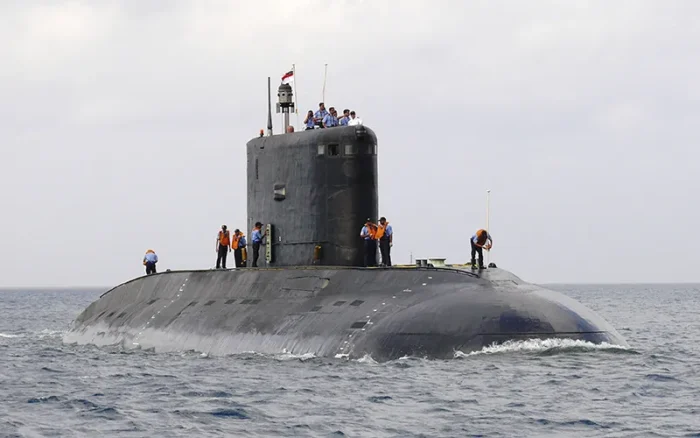Indian Navy is opening submarine doors to women, but it must navigate crewing challenges
The Navy’s decision to include women in Indian Navy Submarine crews is significant, but it also brings about specific challenges related to crew arrangements, bunking arrangements, and privacy concerns that need to be carefully addressed.

In various cultures, ships are assigned different genders. For instance, the French, Portuguese, and Italians refer to ships in the masculine gender, while Germans use the neuter gender ‘it’. Conversely, in India and some other parts of the world, ships are referred to in the feminine gender. An amusing explanation often shared is that when a ship arrives at a port, its first action is to head towards the ‘buoys’—a play on words that adds a touch of humor to the maritime tradition.
It’s not surprising then, that among the branches of the Indian Armed Forces, the Indian Navy is leading the way in inducting women and promoting ‘nari shakti’ (women empowerment). Recently, the Chief of Naval Staff, Admiral Hari Kumar, expressed the Navy’s goal of having a woman as its chief within the next 30-35 years.
Also Read : India Deploys 11 Submarines, A First In Nearly Three Decades
In alignment with this vision, the Indian Navy Submarine is welcoming women across ranks and departments, including its Submarine arm—a domain traditionally seen as a male bastion and considered to present significant challenges for women taking up combat roles in any of the armed services. Beyond the inherent challenges of combat roles, there are practical concerns such as crew management, accommodation, and privacy, given the confined spaces onboard submarines, which present constraints for working, living, movement, and personal hygiene.
Furthermore, these challenges must be managed and endured for extended periods, sometimes lasting up to a couple of months. Consequently, considerations regarding health and medical care, as well as the psychological implications of having mixed-gender crews, also become significant factors to address.
Crew and Bunk Management
Crew and bunk management in Indian Navy Submarine present interconnected challenges. The crux of the matter is that if genders are segregated, it becomes extremely difficult to find a female crew member of the required qualification, rank, and gender to relieve another crew member, especially during the transitional phase to mixed-gender crews. This difficulty arises due to the limited pool of available women, particularly during the initial stages of implementing mixed-gender crewing. Compounding this issue is the voluntary nature of service, which makes it impractical to predict the availability of female volunteers for foreseeable deployment periods in advance.
The confined space within submarines allows no room for empty bunks. In some submarines in the Indian Navy’s service, ‘hot bunking’ is a common practice, where two sailors on opposite watch rotations share the same bunk. Consequently, mixed-gender accommodation emerges as a viable solution. However, this exacerbates the privacy concern.
Privacy and Health
Bunking arrangements and personal ablutions pose significant privacy concerns in submarine environments. One potential solution for future submarines is to design them for mixed-gender accommodation, where each submariner is allocated individual bunks with privacy curtains. Additionally, a minimum attire policy, such as wearing shorts and t-shirts at all times, including while sleeping, could be implemented for the entire crew.
In the confined space of submarines, fostering mutual understanding and respect for privacy is crucial. Strict enforcement of prohibitions on socializing and maintaining proximate interpersonal relationships, as practiced on surface ships, is essential. However, making modifications to the existing inventory of submarines is challenging. Existing submarines are equipped with toilets at an average ratio of approximately 1:20/25 people, depending on the Submarine Class, leaving no room for separate gender-based provisions.

Furthermore, the submarine environment is characterized by factors like lack of sunlight, high noise and vibration levels, relative inactivity, and chronically elevated levels of CO2, all of which pose documented health risks. Onboard treatment for general gynecological needs is unavailable, and women are more susceptible to osteoporosis due to the lack of sunlight. Female volunteers will need to be educated about these risks and undergo enhanced medical screening before deployment.
While these challenges may affect the number of volunteers until future submarines are designed with mixed-gender crewing in mind, they should not discourage individuals with resilience, self-confidence, and a spirit of adventure.
Challenges can be Overcome
Many navies worldwide have integrated women into submarine service over the past three decades. Norway took the lead in 1985, with the first woman submarine captain appointed in 1995. Subsequently, countries like Sweden, Australia, and Spain followed suit in the 1990s, with Canada and Germany joining in the 2000s. The US, UK, and France integrated women into their submarine forces in the 2010s, while Japan and South Korea did so in 2018 and 2023, respectively. India decided to follow suit in 2023 and is currently developing an induction plan.
There is much to be learned from the experiences of these navies, and the Indian Navy will undoubtedly incorporate this knowledge while considering the Indian cultural context. With the induction of women on surface ships in 1997, the Indian Navy already possesses significant experience, particularly in crew and bunk management and privacy considerations. For instance, INS Imphal, commissioned in December 2023, includes separate accommodation for female officers and enlisted personnel. However, replicating such features on submarines poses challenges, necessitating the adaptation of management policies.
The primary challenge during the transition period is maintaining operational effectiveness. This requires meticulous planning informed by long-term replacement and acquisition plans, which depend on fiscal, material, and technological resources. Ensuring an adequate reserve of human capital with specialized skills in various domains of submarine operations is crucial. Adopting a mixed-crew accommodation model could help mitigate challenges related to uncertain resource availability based on gender.
Transitional stability can be enhanced by inducting women officers in the initial phase, followed by enlisted ranks later on. This approach, adopted by the US and other countries, allows for learning lessons and ensures experienced women officers are available on board to mentor newly inducted enlisted personnel.








